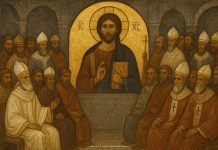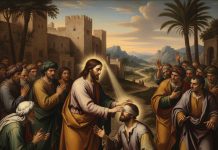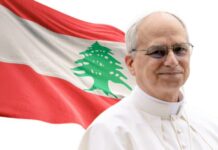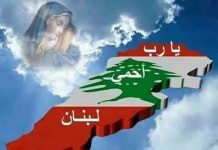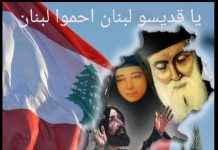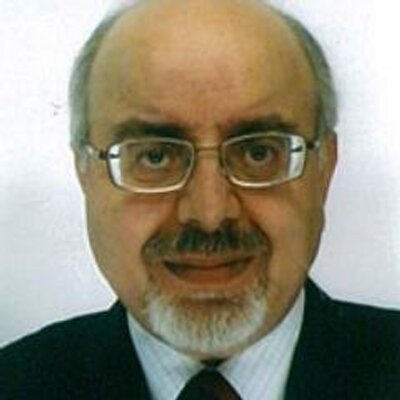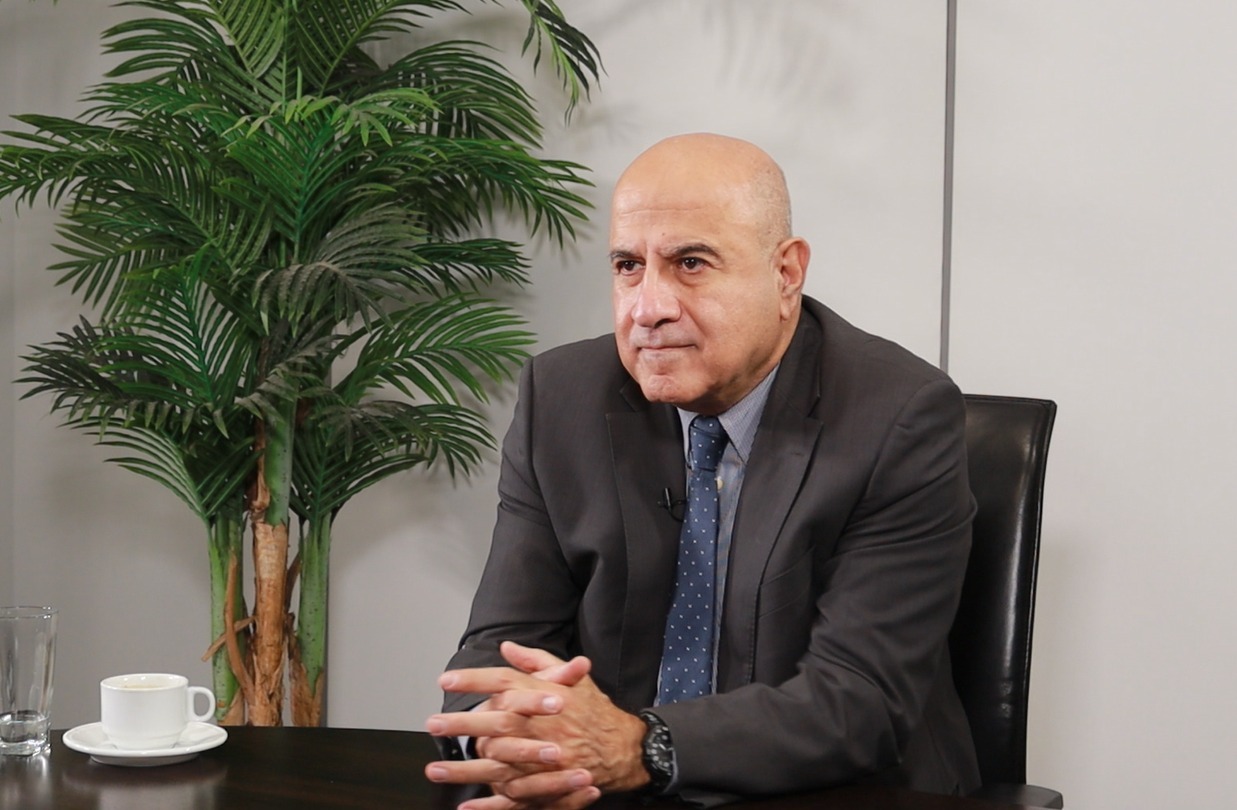Lebanon: A Tale of Two Occupations
Eyad Abu Shakra/Asharq Al Awsat/November 30/17
One thing that seems beyond doubt these days is that the days of ‘double talk’ are over. It is no more possible to get away with fake slogans; as we are before dangerous realities in more than one area in the Arab world, and thus, I claim wise observers have become aware of what is going on, and will not be fooled easily.
‘Post 1920 political entities’, ‘Post 1979 Political Islam (both Sunni and Shi’ite), the relationship between State and non-state’s militias and armed groups, and of course, various types of liberation and revolutionary slogans, are now all under scrutiny.
A few days ago, in ‘Asharq Al-Awsat’, my colleague and friend Amir Taheri uncovered an important side of the problems causing the regional challenges, almost all of which revolve around the Khomeinist- Khamen’ist Iranian role throughout the Arab world.
Personally, I was around in 1982 when what became Hezbollah was created in the political ‘kitchen’ of the Iranian Embassy in the Syrian capital Damascus. The Iranian ambassador then was Ali Akbar Mohtashami (Mohtashamipur), who later went on to become Interior Minister in Tehran; and Damascus later became the party’s regional sponsor and ‘nanny’.
Mr. Taheri was absolutely right to remind those who do not remember, or were witnesses to that period, that Hezbollah which claims to be the embodiment of “resistance” to Israel and the USA was, in fact, nothing but a sectarian vehicle of Tehran’s mullahs, whose prime role was never to resist Israel but rather confront the Palestinian “resistance” movement fighting against Israel!
During the early 1980s, a sizable section of the Shi’ite population of south Lebanon became critical of, even openly opposed to, Palestinian guerrilla operations launched from the area nicknamed ‘Fatah Land’ which the Lebanese government had relinquished to the Palestinian “resistance” organizations.
For its part, Israel kept retaliating against guerrilla operations across its borders by shelling the Shi’ite villages with the intention of turning the villagers against the Palestinians. On the other hand, there were tacit and intersecting interests between the Israelis and Iranians in destroying the Lebanese Leftist and ‘Nationalist’ parties fighting under the banner of the pro-Palestinians ‘Lebanese National Movement’. Shi’ite activists, that time, constituted a sizeable percentage of the LNM’s rank and file.
Indeed, Iran since the days of the Shah (pre-1979) was unhappy about Lebanese Shi’ite intellectuals and youth joining Arab nationalist and leftist parties. Israeli and Iranian interests continued, later on, to intersect after the Khomeini ‘Islamic Revolution’. While Israel, which during the Cold War was opposed to pro-USSR ‘Left’ and keen to deprive the Palestinians of their Lebanese support base, Khomeinist Iran chose to invest in Lebanon’s sectarianism and nourish it. This was very much in Israel’s strategic interests which have always capitalized on and benefitted from religious and sectarian contradictions throughout its Arab neighbors, being the obvious prerequisite for division, conflicts and the much sought after ‘coalition of minorities’.
Incidentally, only one year after the June War of 1967, many Lebanese were attracted to the Palestinian ‘resistance’ against Israel, with Khalil Izzeddin Al-Jamal becoming the first ‘martyr’ in 1968. Later on, following the Israeli invasion and occupation in 1982, it was the secular Nationalist and Leftist parties, including the Syrian Social Nationalist Party (SSNP) and the Lebanese Communist Party (LCP), which launched the liberation campaign.
The young men and women led the campaign of liberating South Lebanon, and subsequently Palestine; neither losing the compass nor following a regional non-Arab sectarian project, although many were Shi’ites, like Sanaa’ Muheidly (SSNP) and Anwar Yassin (LCP). For those, their liberation priority was different from those of ‘The Supreme Guide’ in Tehran. They, simply, did not fight and sacrificed their lives in order to exchange one ‘occupier’ for another.
Tel Aviv and Washington know the truth, the whole truth when the commanders of Iran’s Revolutionary Guards (IRGC) shout, boast and threaten to ‘exterminate Israel’, and have these shouts and boasts reverberate in Beirut Shi’ite southern suburbs and Yemen Sa’dah Mountains, as well as the camps of Iraq’s Popular Mobilization Forces (PMF) and the Damascus regime’s media outlets.
Yes, both Tel Aviv and Washington know the whole truth; particularly that the forces that now make up the Iraqi PMF were the main beneficiary of the US invasion of Iraq, and that ‘The Blue Line’ on the Lebanese – Israeli borders is much close to Hezbollah south Lebanon strongholds than the Syrian cities of Aleppo, Albu-Kamal and Deir Ez-Zor. Still, Hezbollah seems to have forgotten the ‘Israeli-occupied’ Sheb’aa farms which were its justification to keeps its arms, and forgotten the Rafiq Al-Hariri assassination’s ‘false witnesses’ who were its excuse to bring down the cabinet of Saad Al-Hariri in early 2011.
As for Hezbollah’s arms, it is worth mentioning that it alone among the Lebanese parties and militias was allowed to remain armed after ‘The Taif Accords’ (1989), under the pretext that it was fighting to liberate south Lebanon. However, it used it against its opponents inside Lebanon in 2008, and later in Syria against the Syrian people’s uprising. From then on, it expanded its explosive ‘services’ to Yemen, Bahrain and elsewhere overseas.
In that regard, in an unforgettable speech, Hezbollah’s Secretary General (Hassan Nasrallah) candidly said that his “most honourable, best, and greatest achievement’ in his lifetime was his speech in which he defended Yemen’s Houthi rebels in the second day of ‘the Storm of Resolve’ campaign; adding “This was the true ‘Jihad’…”! Such talk undermines the credibility of what he claims is his priority: “resisting Israel and fighting America”; and rather, underlines the fact that the mission entrusted to Hezbollah and other sectarian militias created, sponsored and commanded by Tehran in the Arab world, is nothing but carrying out Iran’s regional project.
From a strategic point of view this project faced two possibilities:
1- It succeeds, initially, and thus Iran would impose its hegemony on a vast area where the majority population is non-Shi’ite and non-Persian; but this would provoke strife and endless civil wars.
2- It fails, pushing Iran into seeking more destructive alternatives, unless its regime falls, and its theo-militaristic chemistry disappears.
In either case, the West and Israel cannot lose!
The fact is that Tehran’s regime, through its sectarian attitude and militaristic interventions, has gifted the powers he claims to fight priceless ‘services’. Through inciting, or sponsoring, extremist Sunni groups, it has created a global terrorist phenomenon which in turn has ensured the rise of the extreme right throughout the West. As for ‘liberating Palestine’, its active support of certain trends with Hamas, as well as Islamic Jihad Organization, has ensured destroying Palestinian unity, and strengthening the Likud and other extreme right-wing Israeli parties hell-bent on expanding illegal settlements and rejecting any meaningful peace negotiations.
لبنان: قراءة بين «احتلالين»
إياد أبو شقرا/الشرق الأوسط/26 تشرين الثاني/17
أمر واحد يبدو محسوماً هذه الأيام هو أنه ما عاد ثمة مجال لـ«الكلام المزدوج»، ولا لتمرير شعارات لا علاقة لها بالواقع على الأرض. إننا أمام استحقاقات خطيرة في غير مكان من عالمنا العربي. وأزعم أن العقلاء باتوا على بيّنة من التحدّيات ولذا ما عادوا ينخدعون بسهولة.
«كيانات ما بعد 1920»، و«الإسلام السياسي بعد 1979» (بوجهيه الشيعي والسنّي)، والعلاقة بين الدولة والسلاح خارجها وخارج مؤسساتها، وطبعاً شعارات التحرير والثورة من مختلف الأصناف… كلها باتت على المحكّ.
الزميل أمير طاهري أماط اللثام، بالأمس في «الشرق الأوسط»، عن جانب مهم من الأزمات التي تتصدّر التحديات الإقليمية، لعلها تُختصر جميعاً بظاهرة الدور الإيراني الخميني – الخامنئي على امتداد العالم العربي. وكاتب هذه السطور عاش فترة 1982، أيام تأسيس ما بات يُعرف بـ«حزب الله» في «مطبخ» السفارة الإيرانية بالعاصمة السورية دمشق على يد – السفير يومذاك – علي أكبر محتشمي… قبل أن يعود إلى طهران ليصبح وزيراً للداخلية. وقبل أن تتحول دمشق حافظ الأسد إلى «كفيل» و«حضن» له في المنطقة.
الزميل طاهري أصاب في تذكير مَن لا يتذكرون، أو ما كانوا شهوداً على تلك الحقبة، بأن الحزب الذي يصوّر نفسه تجسيداً لـ«المقاومة» ضد إسرائيل وأميركا كان في واقع الأمر حركة مذهبية تابعة لملالي طهران مهمتها الأولى ليست مقاومة إسرائيل، بل التصدّي للمقاومة الفلسطينية ضد إسرائيل.
كان قطاع من البيئة الشيعية في جنوب لبنان، يومذاك، قد أخذ يضيق ذرعاً بعمليات الكفاح المسلح الفلسطيني من المنطقة التي وافقت الدولة اللبنانية على تركها للمقاومة الفلسطينية، وعُرفت في حينه بـ«فتح لاند». وكانت إسرائيل تتعمد الرد على عمليات الكفاح المسلح الفلسطيني بقصف قرى الجنوب لإثارة نقمة شعبية على الفلسطينيين. ومن جانب آخر، كان تقاطع المصالح الضمني بين تل أبيب وطهران يقضي بضرب قوى اليسار والقوى القومية المنضوية في «الحركة الوطنية اللبنانية» والمتضامنة مع الفلسطينيين… وفي حينه كان الشيعة يشكلون نسبة عالية من حركييها.
والحقيقة، أن إيران كانت تعارض انجذاب الشباب والمثقفين الشيعة، في جنوب لبنان خصوصاً، إلى الأحزاب القومية واليسارية منذ أيام الشاه. واستمر تقاطع المصالح الإيرانية الإسرائيلية بعد ثورة الخميني، إذ بينما كانت تل أبيب – إبان الحرب الباردة – معادية لليسار وحريصة على تجريد الفلسطينيين من حاضنتهم اللبنانية عملت الثورة الخمينية على الاستثمار في المذهبية وتعزيزها. وكان هذا في صميم المصالح الاستراتيجية لإسرائيل المستفيدة من التناقضات الدينية والمذهبية في الأقطار العربية المحيطة، كونها المقدمة البديهية والحتمية للانقسام والتناحر وتحالف الأقليات.
أصلاً بدأ اللبنانيون المشاركة في المقاومة ضد إسرائيل بعد «نكسة يونيو (حزيران)» في السنة التالية للنكسة، عندما استشهد خليل عز الدين الجمل عام 1968. وبعد الاحتلال الإسرائيلي عام 1982 أطلقت شرارة المقاومة أحزاب علمانية قومية ويسارية بينها الحزب السوري القومي الاجتماعي والحزب الشيوعي اللبناني.
شباب هذه الأحزاب قاوموا من أجل التحرير وفلسطين ولم يضيّعوا البوصلة الجغرافية، ولا آمنوا بالتبعية لمشروع مذهبي إقليمي غير عربي مع أن بعضهم من الشيعة (مثل سناء محيدلي وأنور ياسين). لقد كانت أولويات التحرير عند هؤلاء غير أولويات «المرشد الأعلى» في طهران. وما ناضلوا وضحوا من أجل استبدال «احتلال» بـ«احتلال».
واليوم تعرف تل أبيب وواشنطن الحقيقة… عندما يزايد قادة الحرس الثوري الإيراني في موضوع «مسح إسرائيل عن الوجود»، وتتردد أصداء تهديداتهم ومفاخراتهم في الضاحية الجنوبية لبيروت وجبال صعدة حجة في اليمن، ناهيك من معسكرات الحشد الشعبي في العراق ووسائل إعلام نظام دمشق.
إنهما تعرفان الحقيقة جيداً. ولا سيما أن القوى التي تشكل الحشد الشعبي كانت المستفيد الأول من الغزو الأميركي للعراق، كما أن «الخط الأزرق» الحدودي مع إسرائيل في جنوب لبنان أقرب بكثير لمعاقل حزب الله اللبناني من حلب والبوكمال ودير الزور. ومع ذلك، نسي «حزب الله» مزارع شبعا «المحتلة» التي ظل يبرّر باحتلالها احتفاظه بسلاحه، كما نسي حكاية «شهود الزور» التي استخدمها لإسقاط حكومة سعد الحريري في مطلع عام 2011.
ثم إن سلاح «حزب الله»، الذي احتفظ به وحده من دون باقي الأحزاب اللبنانية بعد «اتفاق الطائف» (1989) بذريعة تحرير الجنوب، حوّل إلى الداخل اللبناني عام 2006، ثم داخل سوريا منذ انتفاضة الشعب السوري. وبعدها وزّع «خدماته» التفجيرية إلى اليمن والبحرين وما وراء البحار. وإن ننسى لا يجوز أن ننسى قول أمين عام الحزب علناً بأن «أشرف شيء وأفضل شيء وأعظم شيء» فعله في حياته هو خطابه (دفاعاً عن الحركة الحوثية) في ثاني أيام «عاصفة الحزم»، مضيفاً أنه يشعر «أن هذا هو الجهاد الحقيقي!».
هذا الكلام ينسف أي صدقية لأولوية مقاومة إسرائيل ومحاربة أميركا، ويؤكد أن المهمة الموكلة لحزب الله وغيره من الميليشيات المذهبية التي شكلتها وترعاها وتأمرها طهران في العالم العربي… ليست سوى تنفيذ مشروع إيران الإقليمي.
هذا المشروع، وفق الحسابات الاستراتيجية، أمامه احتمالان: الأول، أن ينجح مرحلياً، فتهيمن إيران على منطقة شاسعة غالبية سكانها من غير الشيعة وغير الفرس، ما سيؤدي لاحقاً إلى فتن وحروب أهلية لا تنتهي. والثاني أن يفشل، فتلجأ إيران إلى بدائل تدميرية أخرى… إلا إذا سقط نظامها وتغيّرت بنيته «الثيو – عسكرية».
في الحالتين، لا الغرب خاسر ولا إسرائيل خاسرة.
الحقيقة أن نظام طهران أدى، بنهجه الطائفي وتدخلاته العسكرية، «خدمات» لا تقدّر بثمن للقوى التي يزعم أنه يعاديها. وهو، سواءً عبر استثارته أو رعايته جماعات سنّية متشدّدة، خلق ظاهرة إرهاب عالمية غذت قوى اليمين في عموم دول الغرب. أما فيما يخص تحرير فلسطين، فلقد أدى دعمه تيارات في حركة حماس و«الجهاد الإسلامي» إلى ضرب وحدة الصف الفلسطيني، وتعزيز قوة الليكود والأحزاب الإسرائيلية المتطرّفة المصرّة على توسيع الاستيطان، ورفض أي حوار من أجل السلام.





